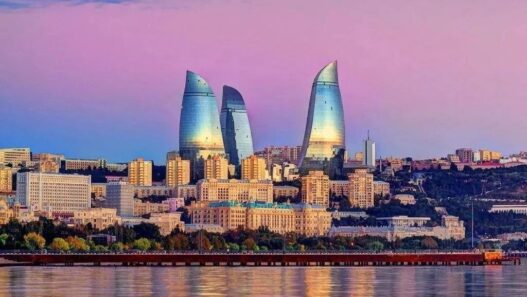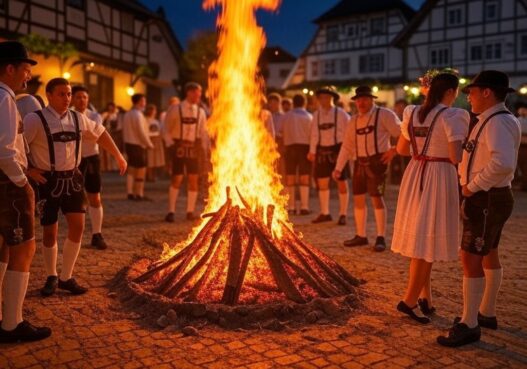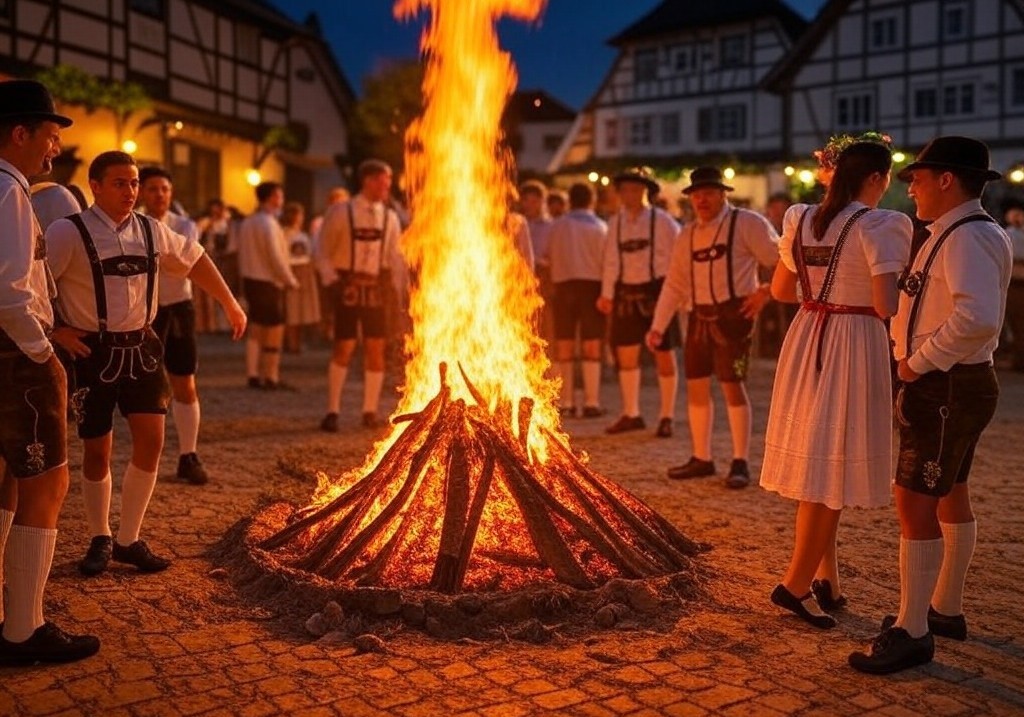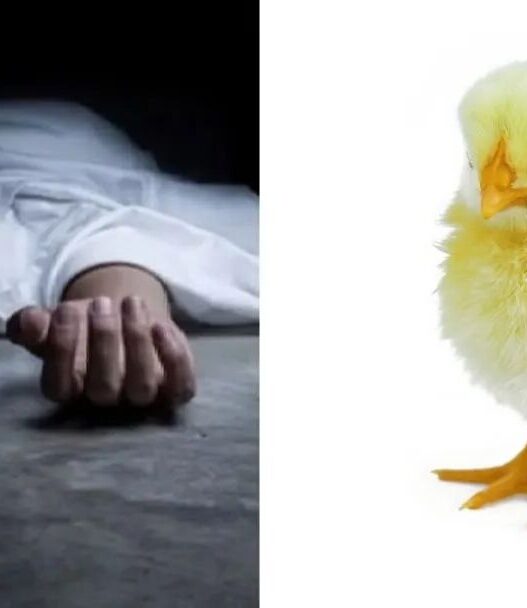In Borkum Island, in northern Germany, people have been celebrating a very bizarre festival for centuries called Klaasohm, where men dressed in strange costumes roam the island searching for women to hit their bottoms with cow horns…
Due to the small population of Borkum Island and the festival being essentially exclusive to locals, little is known about this eccentric event by outsiders. Precious footage was obtained this year by German media through secret filming.
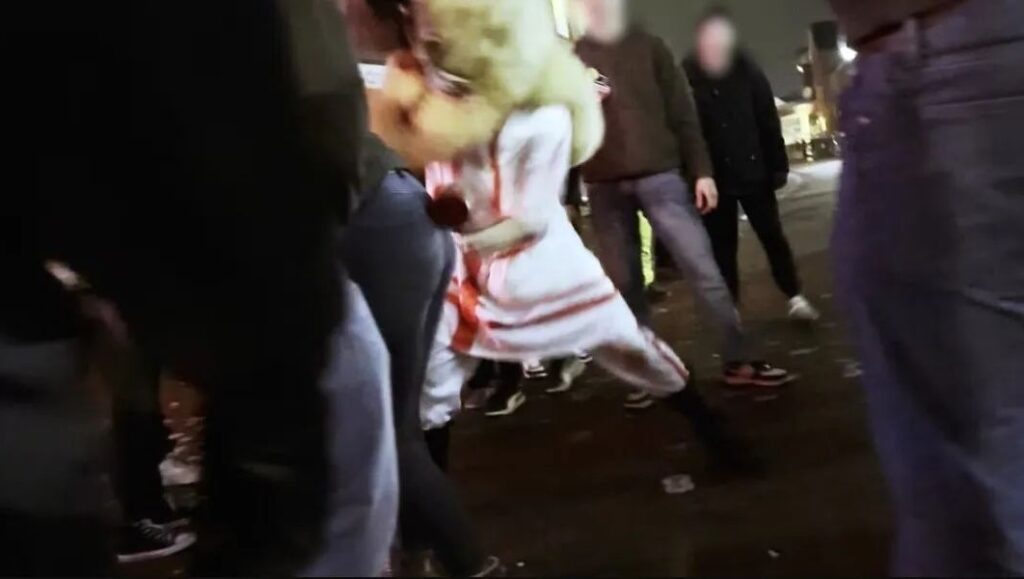
(Men hitting bottoms with cow horns)
Let’s introduce what Klaasohm is all about.
“-ohm” is a suffix denoting respect, used on the island to refer to someone older and respected, like “Pastor-Ohm” for a priest, so the term should really be written as “Klaas-Ohm,” where Klaas is a name, a variant of “Nicholas.”
This is actually Borkum Island’s version of St. Nicholas Day.
What is St. Nicholas Day, you ask?
In simple terms, St. Nicholas is one of the prototypes for Santa Claus. Legend has it that St. Nicholas would bring candies and small gifts to children, depicted as an old man with a white beard.
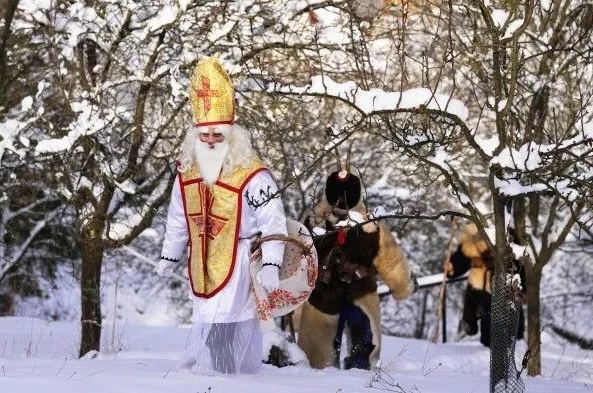
(St. Nicholas)
Many European countries still celebrate St. Nicholas Day on December 6th, but with the spread of Christianity, St. Nicholas has gradually transformed into the version we know today, which won’t be elaborated here.
Due to Borkum Island’s relative isolation, the ancient St. Nicholas Day has evolved into something almost unrecognizable. Here’s how it looks now:
At noon on December 5th, the town echoes with the sound of loud cow horns, signaling the start of the game.
The Borkum Youth Association secretly selects six single men to be “Klaasohm,” and they find out they’ve been chosen at the last minute, then they begin to dress up in traditional costumes and wear a half-meter-high, mythical helmet.
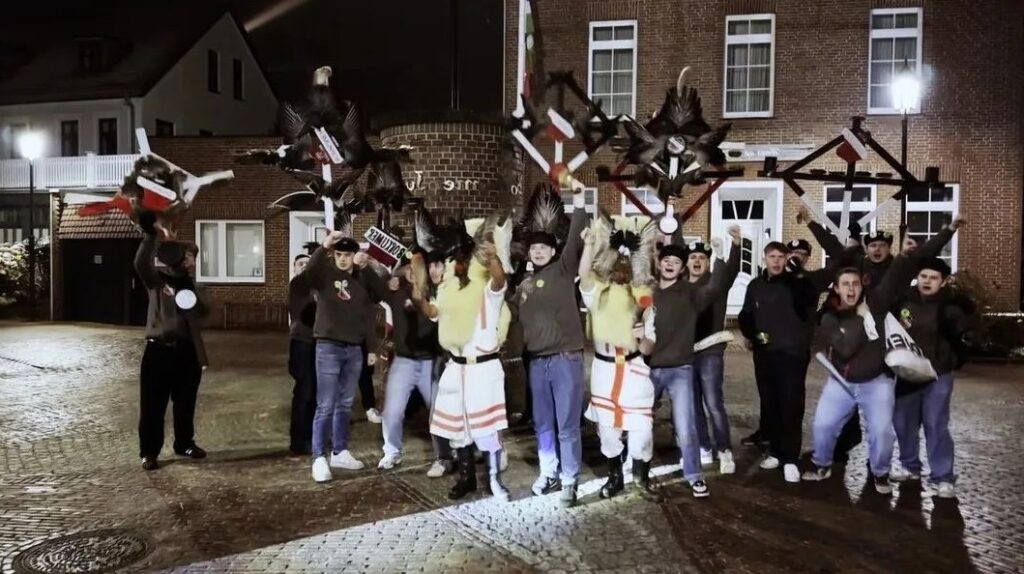
(Klaasohm in traditional attire)
The helmet is reportedly lined with sheepskin, covered with seagull feathers and cow horns, but it only has two holes, one large and one small; the small one for seeing, the large one for drinking water.
These six individuals are divided into three groups: two aged 14-15, known as “Little Klaasohm”; two aged 16-17, “Middle Klaasohm”; and two men over 18 as “Big Klaasohm.”
Additionally, someone needs to dress up as “Wiefke,” pretending to be a woman accompanying the Big Klaasohm, wearing a skirt, a seal skin mask, and a white linen hat. “She” also has two pockets filled with honey cakes to distribute to the women who get their bottoms hit.
Finally, these three groups must fight at a secret location. The older ones must defeat the middle and the younger ones, the middle must defeat the younger, or they lose their eligibility. However, outsiders can’t witness this fight because only local men can enter the secret location, and they check IDs…
After the fight, the “hunt” of the Klaasohms begins. They rush out from the secret location in groups, patrolling along a predetermined route, not seeing each other.
Due to the design of the helmet, they can barely see, so they are accompanied by a group of “catchers” who help them catch women, some supporting them, others grabbing the women.
Upon hearing a bell, women must hug their knees with both hands; if they’re not quick enough, they become prey for the catchers. The catchers will hold the woman down, waiting for the Klaasohm to approach with a cow horn, hitting her bottom amidst cheers from the audience. According to the footage secretly filmed by German reporters, the hits are real… Of course, young girls and older women are spared this ordeal.
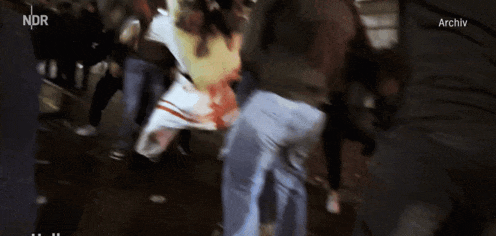
(Klaasohm hitting bottoms)
It’s said that being hit by a cow horn is very painful, sometimes even causing bruises, but many women are eager to participate, partly because they get “Moppe,” a hard honey cake, after being hit.
The three groups of Klaasohms proceed along the set route, sometimes climbing trees, sometimes scaling walls, and might stop at a bar to drink a whole glass of German beer. They continue hitting bottoms and handing out cakes amidst laughter—or sometimes screams.
The town’s festivities continue until around 10 PM, when all three groups and Wiefke gather at the town center’s square. There’s a brick pillar where all seven will stand, jumping off one by one to the cheers of the crowd, somewhat like a concert.
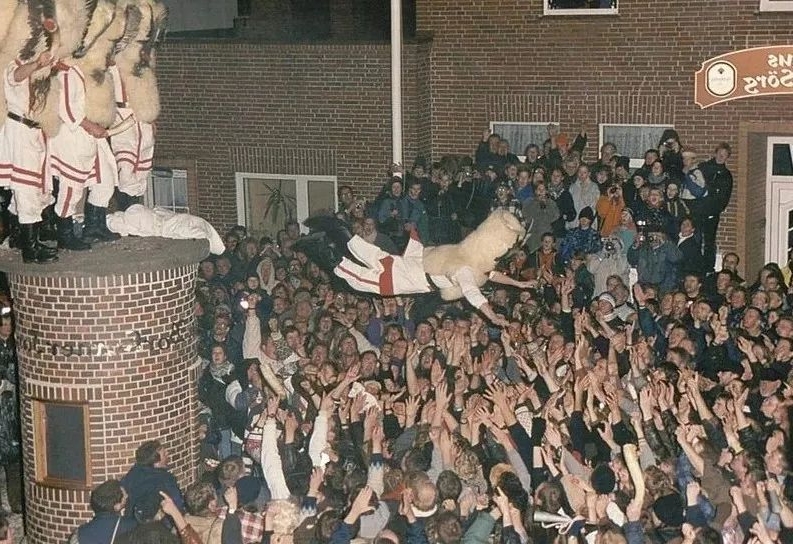
(Jumping off the pillar)
Once everyone has jumped down, the event is essentially over, and everyone goes home to sleep.
It’s truly a bizarre event, and over the years, it has faced opposition. As early as 1987, German media wanted to film a documentary but were met with strong resistance:
“Hello, NDR TV, can we come in?”
—”No, leave here, leave! You’re not welcome, go away!”
For many years, little was known about the inner workings of the Klaasohm festival, as the island discouraged the spread of any footage of the event, even social media posts were not allowed. It wasn’t until November of this year, after over thirty years, that German media finally “avenged” themselves by capturing video…
At the same time, German media exposed some unsavory details, namely that not all women accept this tradition. An anonymous woman A said: “You become the center of attention, with all the audience around you, mocking you… It’s oppressive, shameful.”
Another woman B agreed: “I was 16 or 17 at the time, wanting to run home. Suddenly, a van drove past me, stopped, and three boys I knew jumped out, grabbed my hands and feet, trying to drag me into the van. I tried to protect myself; the whole fight might have lasted ten minutes.”
Women explained that they’ve been taught from a young age that Klaasohm is an exciting game, part of the community’s identity. “If you openly express a desire to stop this tradition, someone will come out and say you’re disrespecting tradition.”
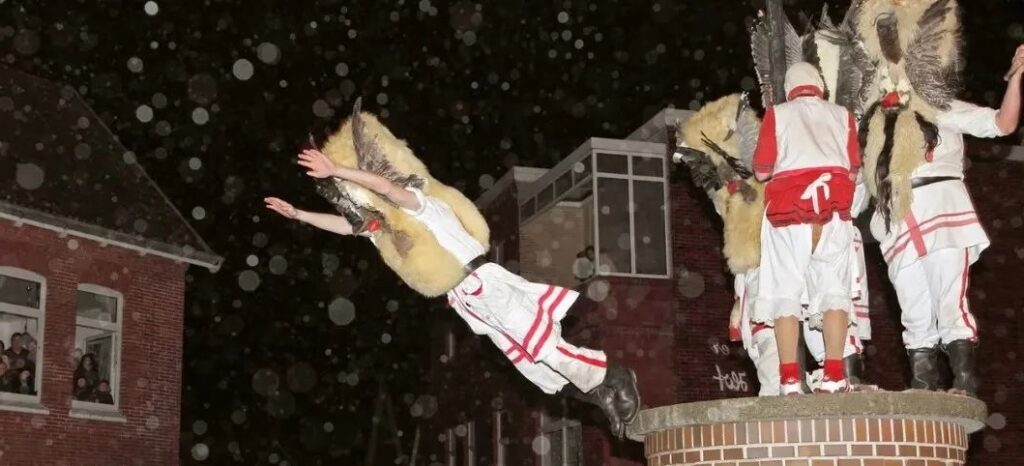
(Jumping off the pillar)
An older woman C recalled being beaten during the festival in her youth, saying she absolutely disliked the event: “It’s only important to men. This is purely a men’s festival. So you need to ask the men what they think of it.”
When a reporter did ask a man, he brushed it off as a “harmless prank”: “When they see women, they hit them with cow horns, it’s not real violence, right?”
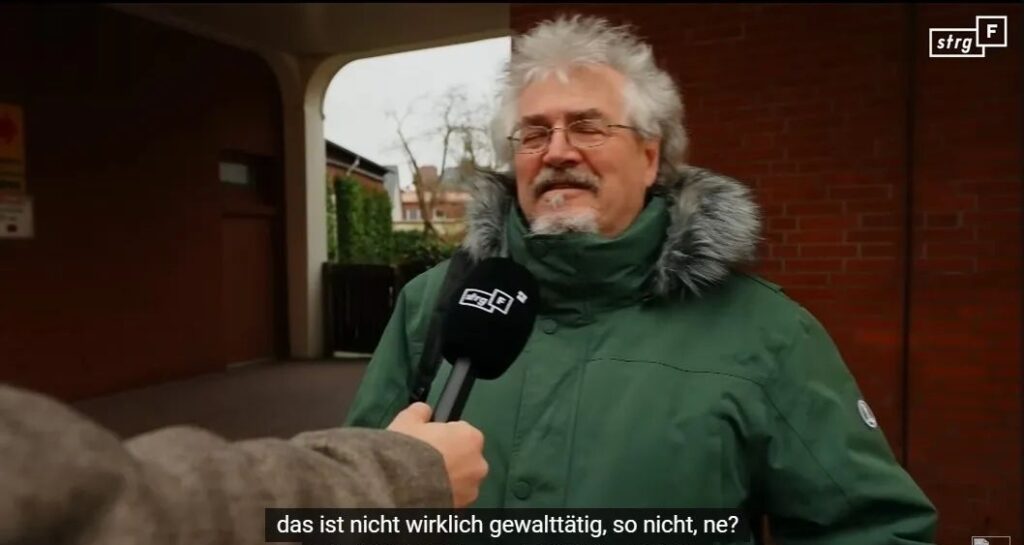
(The man brushes it off)
However, an anonymous interviewee said she was left with bruises on her bottom for days after being hit. If a woman can’t sit down for five to six days after being hit, the men actually feel proud.
Initially, the town’s response was firm, with both the police and the mayor of Borkum refusing interviews. The police stated that no reports of injured women had been received in the past five years, implying no one was truly hurt; the mayor commented via email:
“This is a traditional festival of the islanders, like many regional traditions, it’s not easily accessible to outsiders. It won’t be promoted, and we do not support any mention of it on social media.”
“There will certainly be criticism on the island, but the vast majority of residents support it.”
However, shortly after, the German media’s report video on YouTube quickly garnered over a million views, drawing widespread criticism from netizens, and Borkum quickly changed their stance, stating that they would no longer hit women’s bottoms…
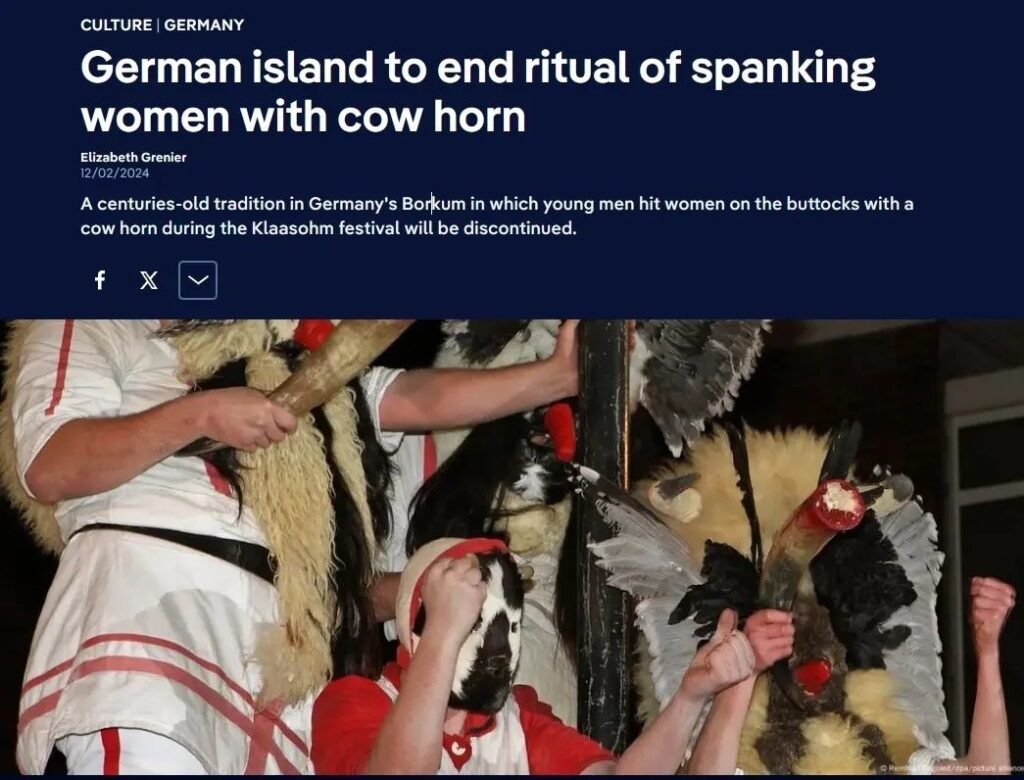
(The island will end the tradition of hitting women’s bottoms)
In a statement, they said:
“We draw a clear line against any form of violence against women and apologize for past behavior.”
“As a community, we have clearly decided to abandon this tradition, focusing on the true essence of the festival—the unity of the islanders.”
The Klaasohm festival is said to have been held for centuries, only interrupted by World War II and COVID, but now it seems it has finally reached its end.
The tide of time rolls forward, and traditions must evolve with it. Whether this is good or bad, what do you think?






